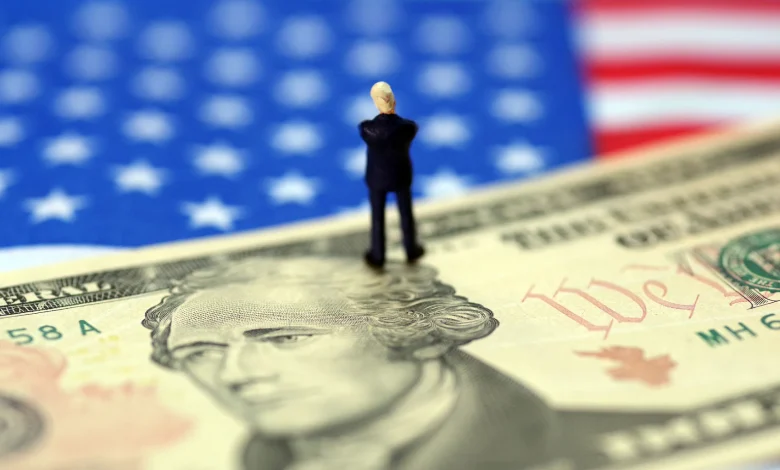Is the US dollar’s dominance under threat? The euro’s attempt to break through 1.1600 has failed; tonight’s congressional vote will be decisive!

During the Asian and European sessions on Wednesday (November 12), the euro-dollar exchange rate exhibited a consolidative trading pattern, digesting earlier gains. Currently, it is trading flat relative to the opening price at around 1.1571, after touching the 1.1600 level intraday on Tuesday.
The failure to break through and sustain above the key 1.1600 level prompted a pullback in the exchange rate, reflecting cautious market sentiment amid ongoing bullish and bearish tensions.
Current trading focuses on two major themes: the progress of the U.S. Congress funding bill vote and the divergence in economic data between Europe and the U.S., alongside policy signals from the Federal Reserve and the European Central Bank (ECB), which collectively dominate short-term fluctuations in the euro-dollar exchange rate.
Stable German inflation and ECB’s policy steadiness provide support for the euro
German inflation data has continued to send positive signals, serving as a crucial foundation for maintaining the euro’s strength.
The Federal Statistical Office of Germany disclosed that the October Harmonized Index of Consumer Prices (HICP) increased by 2.3% year-on-year and 0.3% month-on-month, consistent with preliminary estimates and closely aligned with the ECB’s inflation target of around 2%.
Meanwhile, the Consumer Price Index (CPI) year-on-year growth moderated slightly from 2.4% in September to 2.3%, while the month-on-month increase accelerated from 0.2% to 0.3%, indicating steady easing of inflationary pressures with stable trends.
Additionally, Germany’s wholesale price index (WPI) rose by 0.3% month-on-month in October, surpassing market expectations of 0.1% and marking a notable rebound from 0.2% in September, further underscoring the resilience of the Eurozone’s economic fundamentals.
On the policy front, the ECB has kept interest rates unchanged for the third consecutive month. Given that inflation remains close to target, markets broadly anticipate that the central bank will pause rate cuts within this cycle, providing substantial policy support for the euro.
Weak US employment data and growing expectations of interest rate cuts weigh on the US dollar.
The US dollar has come under significant pressure recently, primarily due to the weakening trend in the US labor market and rising expectations of a dovish Federal Reserve.
Data from Automatic Data Processing (ADP) shows that private sector employers averaged net layoffs of 11,250 workers per week over the four weeks ending October 25, reigniting market concerns about deteriorating employment conditions.
Last week’s Challenger job-cut report revealed that US companies announced layoffs totaling 153,000 in October, the highest level for the same period in two decades. This dual data reinforces the consensus of a weakening labor market.
Fed policymakers have made it clear that the deterioration of the labor market is a key driver of this round of interest rate cuts. If the outlook continues to weaken, expectations for a December rate cut will intensify.
Compounded by the ongoing US government shutdown, which has halted the release of key economic data, the market is currently in a data vacuum. Investors are forced to rely on statements from Fed officials for guidance, while the US Dollar Index extends its pullback from last week’s highs, providing temporary support for EUR/USD.
US faces congressional vote as the dollar rebounds on opportunity.
Market focus in the short term is concentrated on developments in the US Congress. The House of Representatives is set to vote on a government funding bill today. If passed, it would provide funding until the end of January, potentially ending the current shutdown. Backlogged economic data would then be disclosed rapidly, further clarifying the true state of the US labor market.
The US Dollar Index may react in advance; if it rises significantly, passage of the vote could lead to profit-taking by bullish traders. Conversely, failure of the vote could expose the index to downside overshooting risks.
Focus shifts to upcoming speeches by central bank officials from the US and Europe.
During the European trading session on Wednesday, ECB Vice President Luis de Guindos and Governing Council member Isabel Schnabel will deliver public speeches, potentially releasing new signals regarding inflation and the path of monetary policy.
In the United States, several Federal Reserve officials will also comment on employment data. If their statements lean dovish, it could further weigh on the US dollar, providing upward momentum for the euro against the dollar.
Market Reaction: Easing of Caution and Underlying Concerns
Although no high-impact data was released on Wednesday, US stock index futures edged higher amid risk-on sentiment driving capital flows, a trend that provided marginal support for the euro against the dollar.
However, it is important to note that weaker-than-expected German ZEW economic sentiment data highlights underlying concerns: Germany’s economic confidence index for November fell to 38.5 from 39.3 in October, below market expectations of 40.0. Meanwhile, the current situation index improved slightly from -80.0 to -78.7 but still fell short of expectations, indicating that the recovery momentum in the Eurozone economy remains uncertain.
Technical Analysis:
For euro trading, three key developments warrant close attention in the short term: the outcome of the US Congressional vote and progress on the government shutdown, the extent of dovish remarks by Federal Reserve officials, and validation of subsequent economic data from Germany and the Eurozone.
From a technical perspective, the battle over the 1.1600 level will be pivotal for bulls and bears. A sustained hold above this level could pave the way for a move toward the 1.1700 range. Conversely, if prices retreat and break below the 1.1575 support level, further downside toward the 1.1500 psychological threshold may follow.
Investors should maintain flexible position adjustments, aligning with event-driven dynamics and the rhythm of data releases, to precisely capture shifts between bullish and bearish trends.
(Euro to US Dollar daily chart, Source: Easy Forex)
At 21:30 Beijing time, the US dollar to euro exchange rate is quoted at 1.1571/72.





